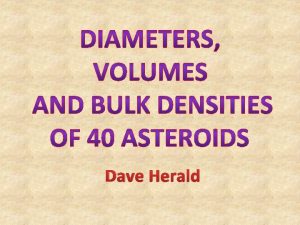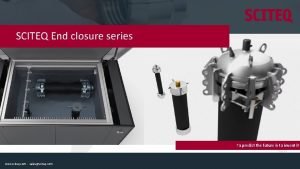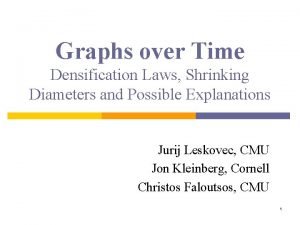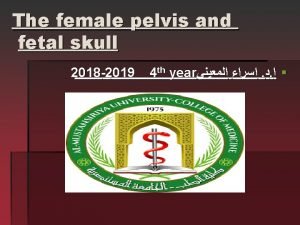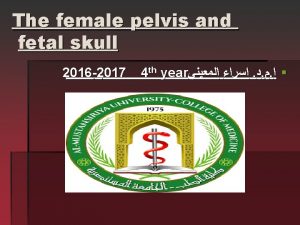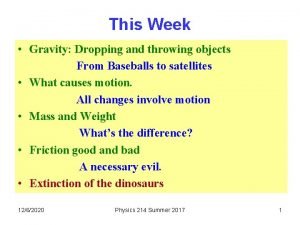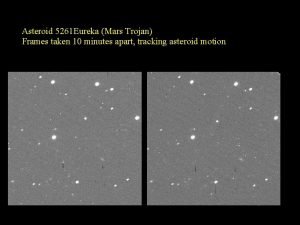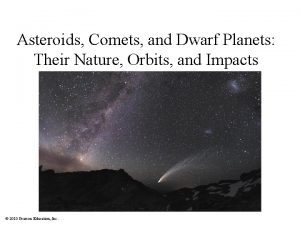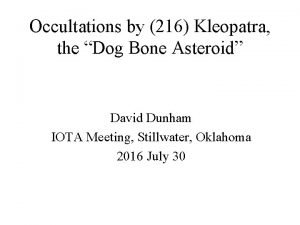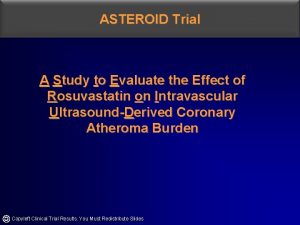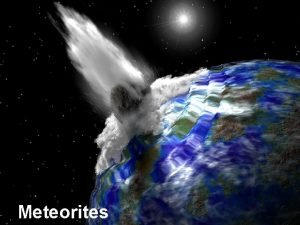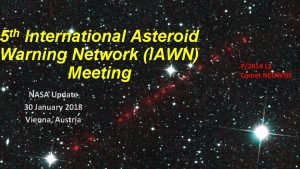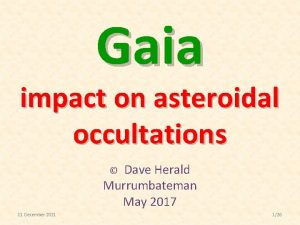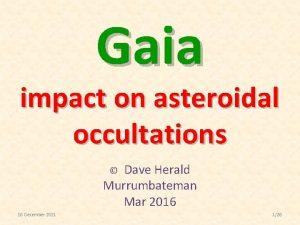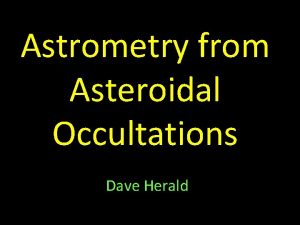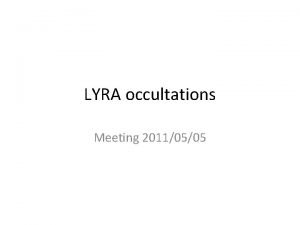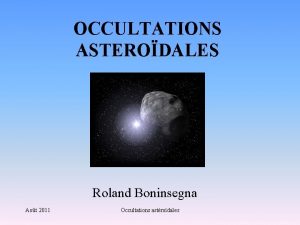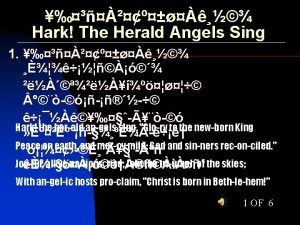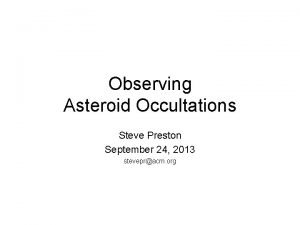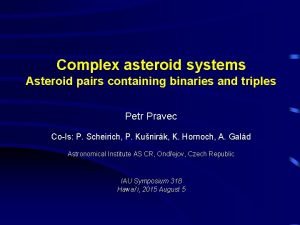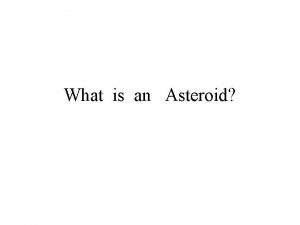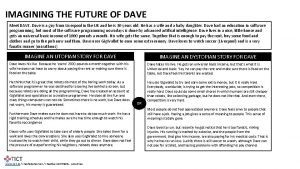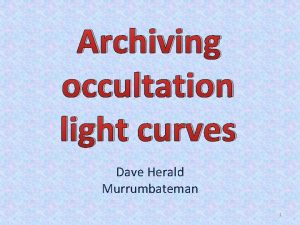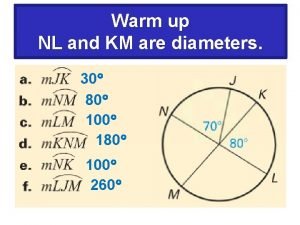Determining asteroid diameters from occultations Dave Herald In





















- Slides: 21

Determining asteroid diameters from occultations Dave Herald

In our predictions, we rely on asteroid diameters determined from (in order): i. AKARI Acu. A (IR satellite measurements) ii. IRAS diamalb (IR satellite measurements) iii. WISE MBA (IR satellite measurements) iv. Asteroid absolute magnitude H 0, using a nominal albedo: Dia = 10 (3. 52 - H 0/5)

• Recently the New York Times published an article that asserted the NASA scientists responsible for analysing the WISE & NEOWISE data had not analysed the data correctly • Argument was based on theoretical considerations of the mathematics/statistics used • Assertions were made that WISE & NEOWISE diameters could be in error by a large amount • Underlying problem – how do we check the validity of inferred diameters

• Current techniques for measuring asteroid diameters are: – Direct measure from a visiting satellite (not many!) – Radar imaging (not many, and they are mainly of Near-Earth asteroids) – Direct imaging with adaptive optics (not many) – Occultations

Problem with occultations • Asteroids are irregular in shape • An asteroidal occultation can derive a profile for a particular orientation of an asteroid, at the 1 km level • Problem – how do you derive the mean diameter of an asteroid from a single observed profile? – how do you reliably combine results from different events in a determinative manner?

Meaning of Mean diameter • What is the ‘mean’ diameter of an irregular object? In practice, the possibilities are: 1. diameter of a sphere that has the same volume as the object 2. diameter of a sphere that has the same surface area as the object 3. tri-axial ellipsoid that has the same volume and moment of inertia as the object (although this does not have a single diameter)

• Diameters of spheres of equal volume and equal surface area are generally different • Example: the ‘mean diameter’ of a cube based on equivalence of surface area is 11% larger than that based on volume. • The most logical basis is volume equivalence. (From advice) WISE determinations apparently are based on surface equivalence. (Other satellite measurements may also be on surface area). Ellipsoidal determinations do not have a single diameter • At the level of precision we can achieve, it is critical that we specify the basis of any ‘mean diameter’ determination.

Using shape models • Can solve the occultation profile issue by fitting observations to shape models • DAMIT shape models now include (in metadata) the dimension of the mean diameter – based on both volume and surface area – with each shape model • In principle, by fitting the chords from a single occultation event to a shape model, we can directly measure the asteroid’s mean diameter

Practical problem #1 • Shape models are derived from light curves measured over a period of years • The period of rotation has a level of uncertainty that is not readily available. That uncertainty depends upon: – The length of time covered by the light curves – The elapsed time since the end of the light curve coverage. • The uncertainty at the date of an occultation can vary between a small fraction of a rotation, to multiple rotations of the asteroid. • In general, the asteroid shape model plotted at the time of an event will be incorrectly oriented because of the uncertainty in the rotation period

Practical problem #2 • The light-curve inversion process for determining a shape model almost always has multiple solutions • The multiple solutions arise from different orientations of the axis of rotation

Challenge • to reliably determine the mean diameter using occultation observations, we need to use shape models • However we need to identify which shape model is the ‘correct’ model, and derive a period of rotation that gives the correct orientation for plural occultation events • Once this is done, we can determine the mean diameter by fitting occultation results to the shape model. By doing this for multiple events, we can get a statistical measure of the accuracy.

Occult tool • Occult now has a tool under development to facilitate determination • Allows download of multiple orientations of a shape model at different intervals – to find the best fit, and identify the correct model • Also allows the download of information on the basis of the light curve


Options for shape model downloads

10 models for best fitting

Example (107) Camilla 2016 Jul 21 Option 1: Period increased by 0. 000004 hrs Option 2: Period decreased by 0. 000030 hrs 2015 Aug 23

Camilla - diameter from occultations Event 2015 Jul 21 2015 Aug 23 2015 May 6 Mean dia - volume 221 km 227 km Mean dia -surface 225 km 231 km Comments Northern-most chord appears to be unreliable. Middle chord has large uncertainty. No reliable determination possible. 2015 Feb 12 2015 Jan 1 Double star. Insufficient data to resolve reliably 1 chord with a nearby miss. No determination possible 2014 Mar 13 3 chords of inconsistent length close together. No reliable determination possible 2013 May 7 Severe timing problems with northernmost chord. Other chord ‘possible’, not definite. No determination possible 2011 Oct 23 2004 Sep 5 >218 km 214 km >222 km 218 km Single chord Observed chords do not fit shape model. Middle chord affected by cirrus. Diameter derived by assuming the chord durations are correct for the two chords not affected by cloud. Result must be doubtful.

Diameter result • Allocating a reduced weight to the 2004 Sep 5 observation, the Mean Diameter of (107) Camilla is : 223 ± 4 km (equivalent volume); or 227 ± 4 km (equivalent surface area). • This compares with: IRAS 222. 62 km (± 17. 1 km) Acu. A 200. 37 km (± 3. 51 km) Wise 219. 37 km (± 5. 94 km + 10% systematic uncertainty)

Learning #1 • Accurate time base is essential • Need to consider the possibility of a shape model fit at two or more different orientations • Need at least two well-observed events to resolve model, and period correction • Need to consider the possibility of the rotation being in error by more than one full rotation

Learning #2 • The correct model and period should fit all past observations • Where a fit does not occur, need to look carefully at the individual observations • Shape model fitting – if done correctly – will identify/exclude erroneous chords

Accurate measurement of asteroid size from occultations is now possible…. Any questions? !
 Dave herald
Dave herald End closures without tie-bar
End closures without tie-bar Countersink autocad
Countersink autocad Graph evolution: densification and shrinking diameters
Graph evolution: densification and shrinking diameters Maternal pelvis and fetal skull
Maternal pelvis and fetal skull Fetal brow
Fetal brow Clinical pelvimetry
Clinical pelvimetry Where can we mostly asteroid found
Where can we mostly asteroid found Asteroid impact simulation
Asteroid impact simulation 5261 eureka
5261 eureka Asteroid belt origin
Asteroid belt origin Mikayahl
Mikayahl Hunting the drudge factory
Hunting the drudge factory Asteroid trial
Asteroid trial Type of meteor
Type of meteor Scintillate scintillate asteroid minific
Scintillate scintillate asteroid minific Asteroid belt
Asteroid belt Iawn
Iawn Joseph campbell hero archetype
Joseph campbell hero archetype Herald of purple light
Herald of purple light Numbers archetype examples
Numbers archetype examples My blood begins my safer
My blood begins my safer
